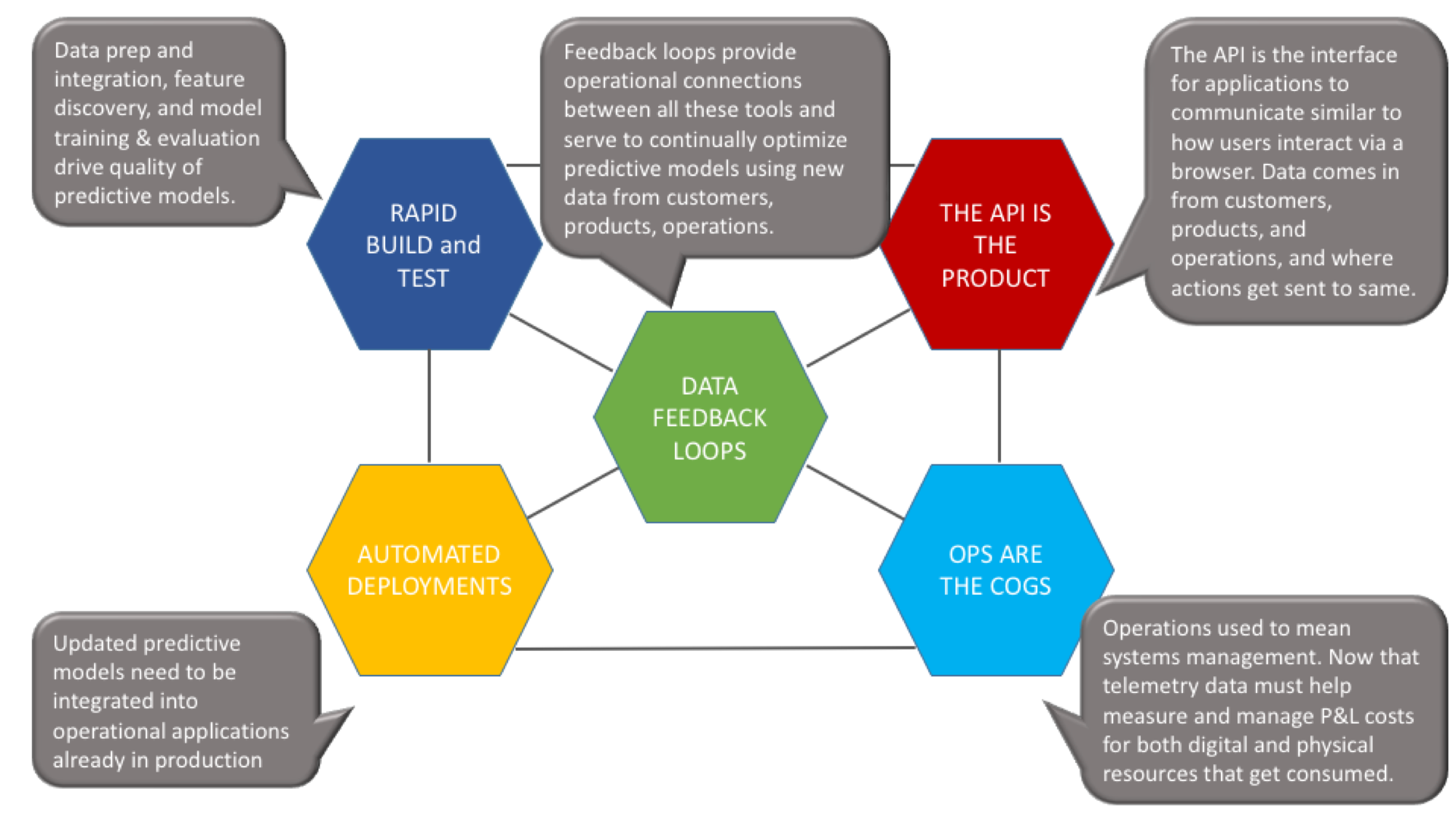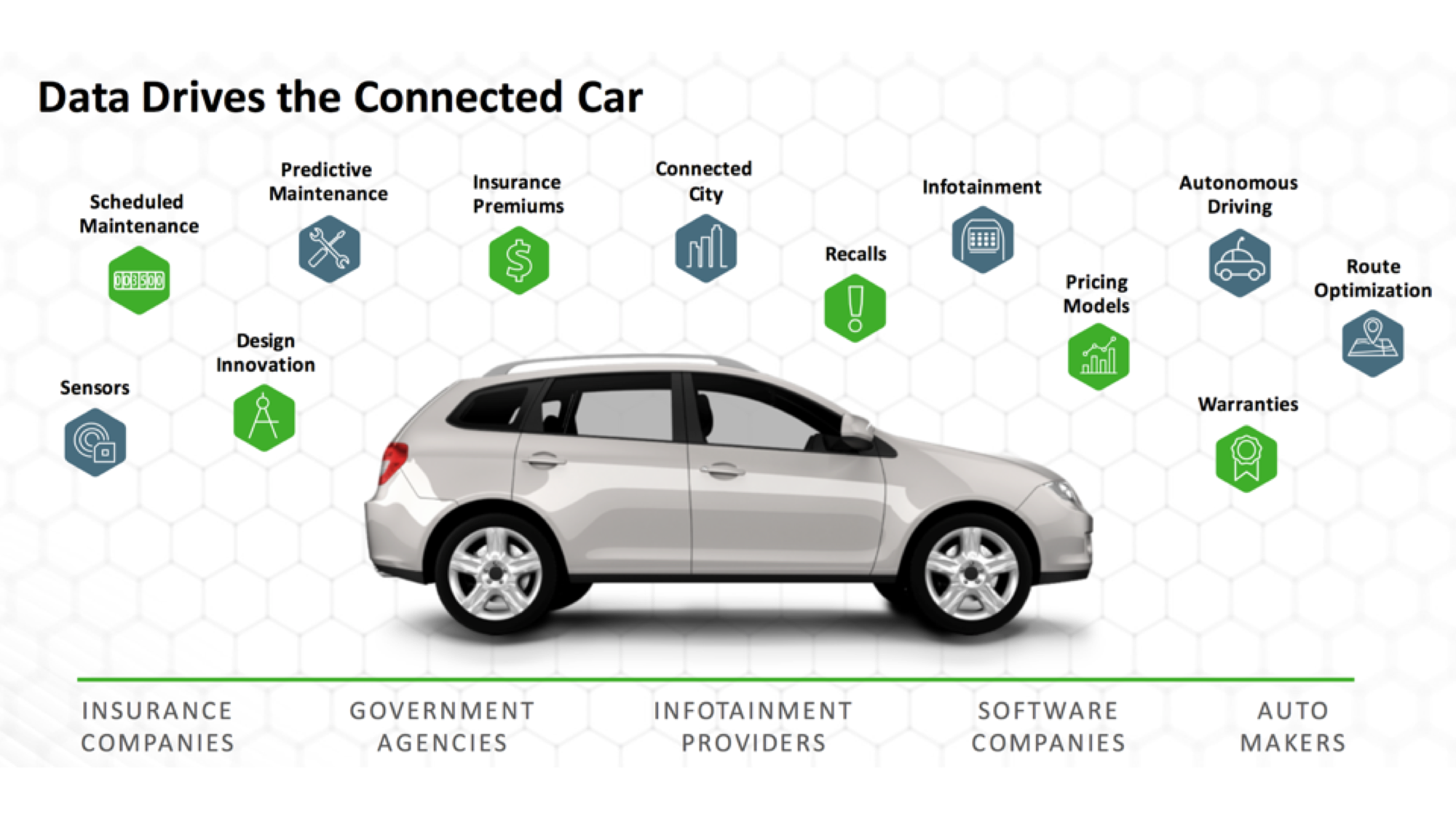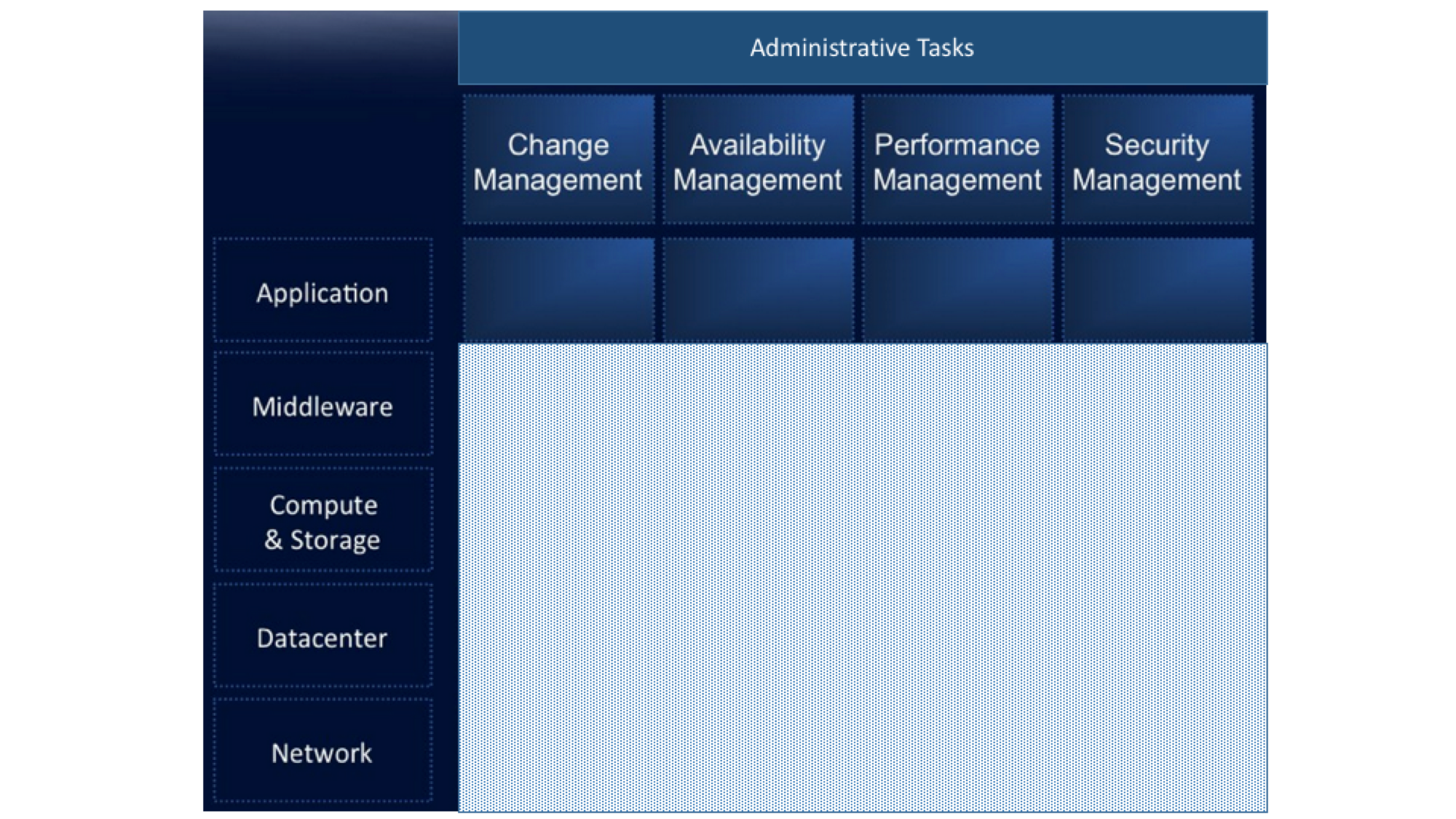Premise
As more mainstream enterprises strive to apply machine learning, the complexity of their big data infrastructure is becoming a problem. Mainstream companies are deploying a digital business platform (DBP) to support modern applications. Big data pros need to to extend the DBP to machine learning applications.
Mainstream enterprises are beginning to deploy machine learning applications that add differentiation to traditional products and services. These new applications can come from several potential sources, such as traditional product suppliers providing complementary service value (e.g., GE Digital); traditional business process application vendors that can add analytics (e.g., Oracle); and vendors with deep vertical industry expertise and with the ability to deliver semi-custom solutions (e.g., IBM). New analytic applications are very different from traditionally packaged ERP and CRM applications. Traditional applications were built on standard business processes. Machine learning applications use data feedback loops from customers, products, and operations to continually refine predictive models that keep improving operational processes and customer engagement. For these applications to work effectively, they need a digital business platform (DBP, see Figure 1) that:
- Supports the movement of complex, high-volume, heterogeneous data. Traditional enterprise applications are built on configurable but static business processes. Emerging enterprise applications use machine learning to continually improve their processes, whether optimizing logistics, finding fraud, or improving customer engagement.
- Leverages data feedback loops as machine learning’s “flywheel.” Emerging enterprise applications use data feedback loops that connect products, customers, and operational activities. Because the data is specific to each organization, the continually improving processes are also differentiated and specific to each organization. Efforts to manage the complex connections using point-to-point data movers will under-deliver.
- Machine learning on Digital Business Platforms needs radical simplification. Today, machine learning is built on a data science pipeline managed by “high priests.” Taking the digital business platform for machine learning mainstream will require democratizing how this pipeline works.

Supports the Complex Movement of High Volume, Heterogeneous Data.
Externally-facing machine learning applications can deliver highly valuable new products and services and enhance traditional offerings. But for these applications to sustain effectiveness as technologies and markets rapidly evolve, enterprises need to build them on digital business platforms. Wikibon research shows that digital business investments are better organized and will deliver greater value when:
- The API is the Product: enterprises can add value to a traditional product or service with an API that provides complementary capabilities;
- Data Feedback Loops: the API is the gateway for the data feedback loops between customers, products or services, and operational decisions;
- Ops are the COGS: the cost of building, testing, deploying, and operating the functionality supporting the API needs to be formalized and measured in the P&L statement as part of the cost of goods sold and operating expenses;
- Rapid Build and Test: operational agility and time-to-market include the ability to build and test improvements to the functionality supporting the API with increasing automation and speed;
- Automated Deployments: getting new versions of functionality supporting the API into production is also critical to agility and time-to-market.
Digital Business Platforms that support machine learning applications, which Wikibon calls Systems of Intelligence, must support a range of unique application function, including high-volume data movement, heterogeneous data formats, unpredictable user patterns, and rapid technological change. As a result, the DPB for big data needs additional capabilities on top of these foundation services:
- The API is the Product: enterprises can add an API to a traditional product or service that provides access a rich range of complementary services throughout the lifecycle;
- Data Feedback Loops: built around predictive models enable delivery of continuously improving customer engagement linked to ever improving operational processes;
- Ops are the COGS: the predictive models will increasingly drive what and how digital and physical resources are consumed – these resources in turn get reported in COGS and opex on the P&L;
- Rapid Build and Test: as the data feedback loops improve the predictive models that connect customer engagement with operational processes, getting them rapidly built and tested will be critical for time-to-market competitiveness;
- Automated Deployments: getting new, more up-to-date versions of models integrated into production applications also has to be increasingly automated for time-to-market competitiveness.
Data feedback loops are the critical ingredient to the success of machine learning applications.
Unlike traditional enterprise applications, machine learning applications dynamically get better at connecting customers’ experiences with product data and operational actions and decisions. It’s the data feedback loops that drive the data science pipelines that make this improvement happen. For example, an auto maker can track and learn about every vehicle it manufactures across its lifecycle from how it was designed, built, delivered, operated, to when and how it is serviced. (See Figure 2 below). Some of the feedback could help the automaker provide each owner with precise timing for preventative maintenance. Other feedback could give the automaker visibility across each vehicle in the fleet into wear and tear of individual components in order to tune designs and warranties for future models. Complementary service providers such as insurance companies can not only price based on personalized risk assessments, but they can deliver advice on how to improve individual driving behavior.

A product fully instrumented with sensors provides a flood of data that could easily overwhelm a business. But this raw material of data is the basis for the feedback loops. The flood of data makes it possible to maintain and keep improving a model for each individual product that’s manufactured, if necessary. But having detailed, high fidelity models also plays the crucial role of filtering out the irrelevant data. Because the model represents how the product works across its lifecycle, it can identify when its behavior is different from what would otherwise be expected and highlight that data. Those “anomalies” can help the vendor triage the most important actions to improve the customer’s experience. The anomalies are also crucial for improving how the machine learning models get better over time in order to improve how well they predict activity.
Machine learning on Digital Business Platforms needs radical simplification.
The Digital Business Platform that exists today, sans machine learning, has reached maturity in terms of administrative simplicity. The major public cloud vendors such as Amazon, Microsoft, and Google and vendors of true private cloud infrastructure, today named converged infrastructure, know how to “make the trains run on-time.” For customers who commit to one of these platforms, they can hide much of the management complexity below the application layer in Figure 3 below.

But the machine learning application layer on top of the basic Digital Business Platform hasn’t caught up. Big data and machine learning have mostly been synonymous with the Hadoop ecosystem. The ecosystem’s greatest strength has always been its great proliferation of innovative products and its mix and match flexibility. But that software product-centric way of organizing analytic application infrastructure is showing its limitations. Big data infrastructure complexity is becoming a problem. Building an analytic digital business platform requires a new methodology.
Major online service providers such as Google, Facebook, LinkedIn, Netflix, and Uber have built bespoke platforms for managing the machine learning process as part of their regular operations. But that technology isn’t for more faint-hearted mainstream enterprises. The technologies to make machine learning an integral part of the Digital Business Platform are still emerging.
Action Item
The weakest link that’s currently in the digital business platform for machine learning is the data science pipeline. At its best, the pipeline is a loose confederation of tools for data wrangling, data visualization, statistical model building and evaluation, redevelopment of models into a higher performance production language, and a highly manual process for integrating the production model into a process that can serve it in a live application. Building integration, repeatability, quality, and speed into that pipeline is the first priority for any organization seeking competence with a digital business platform for machine learning.

